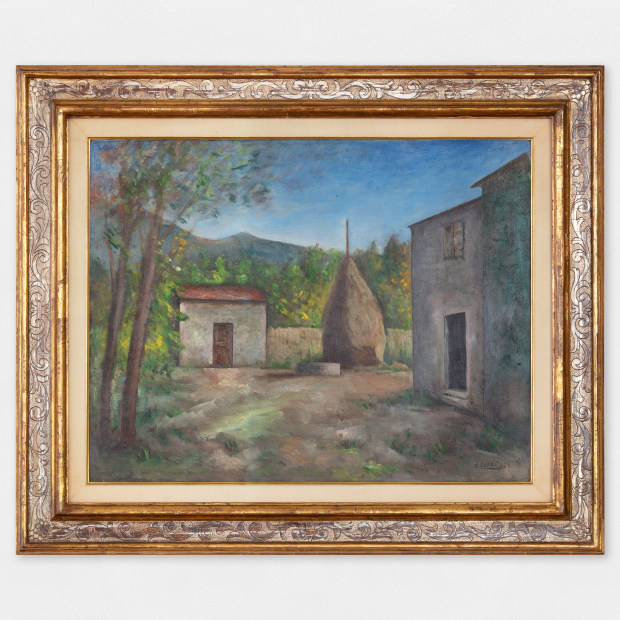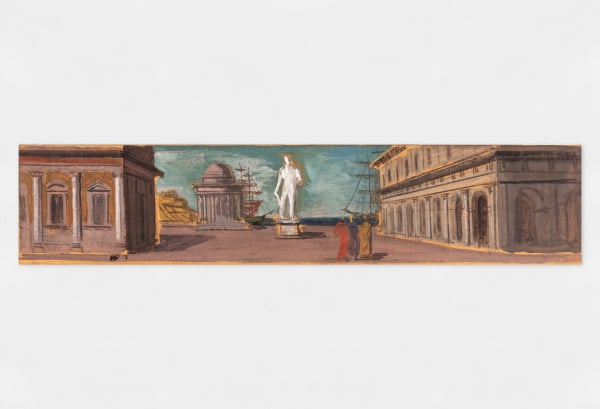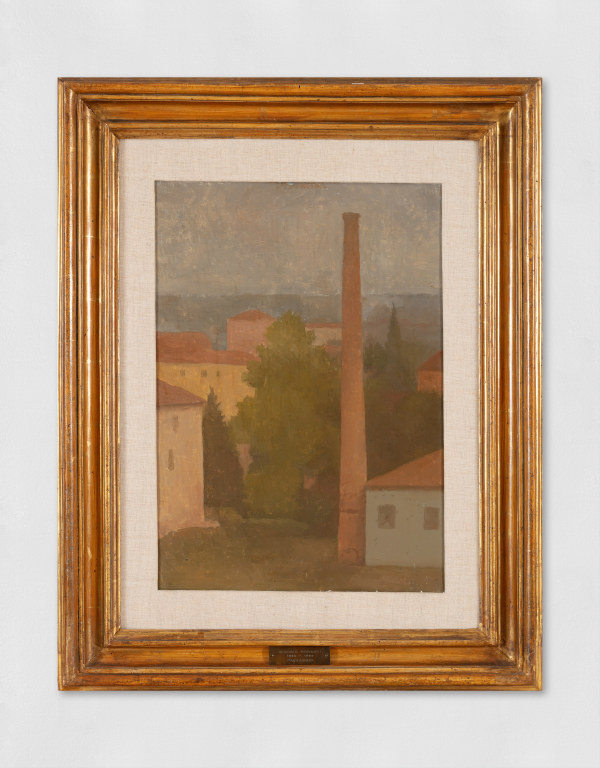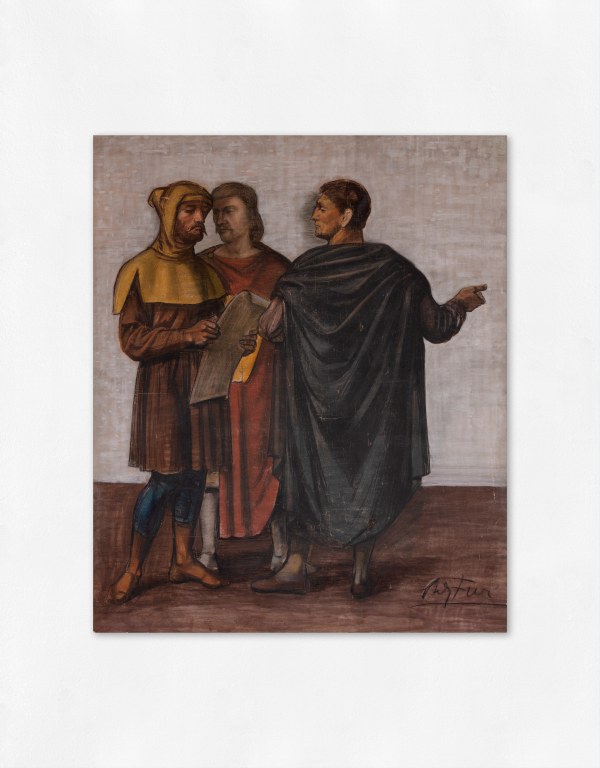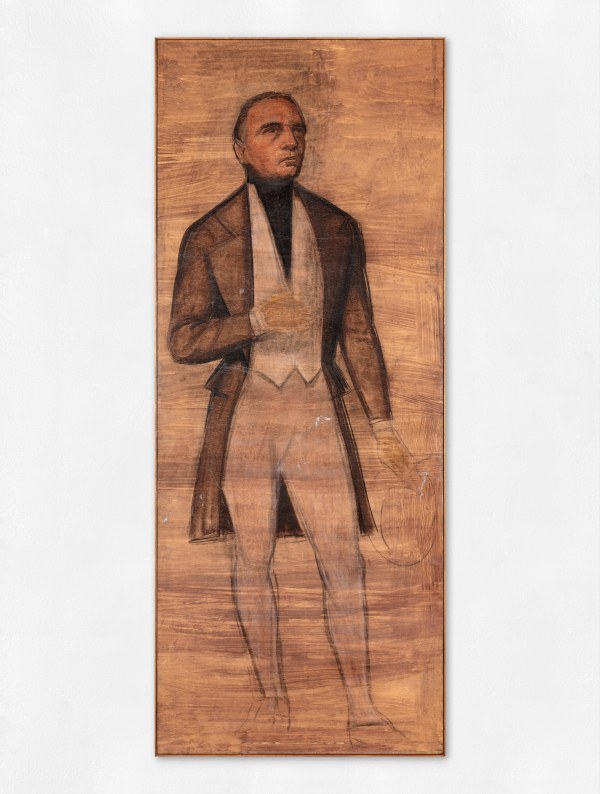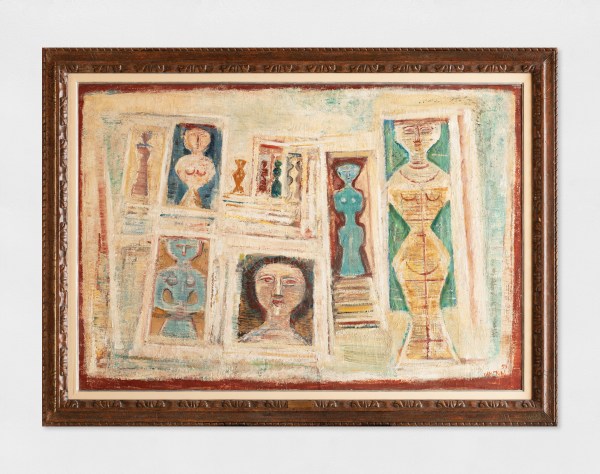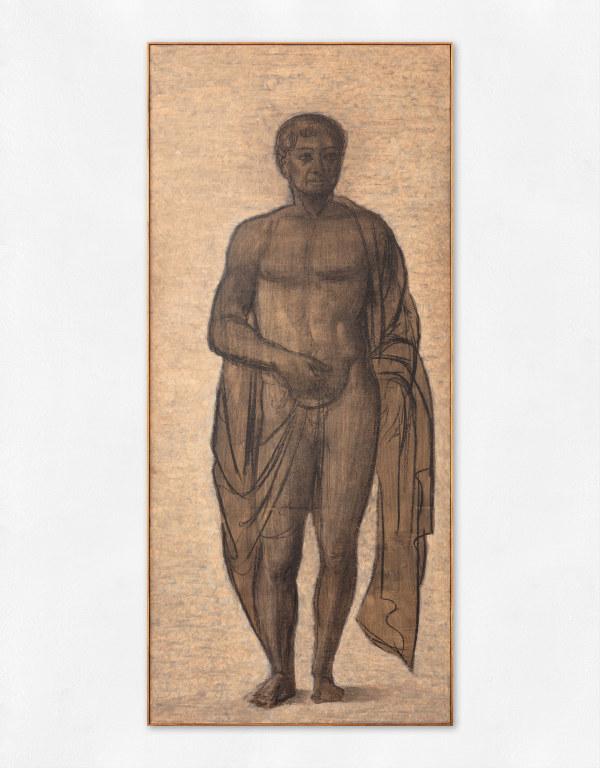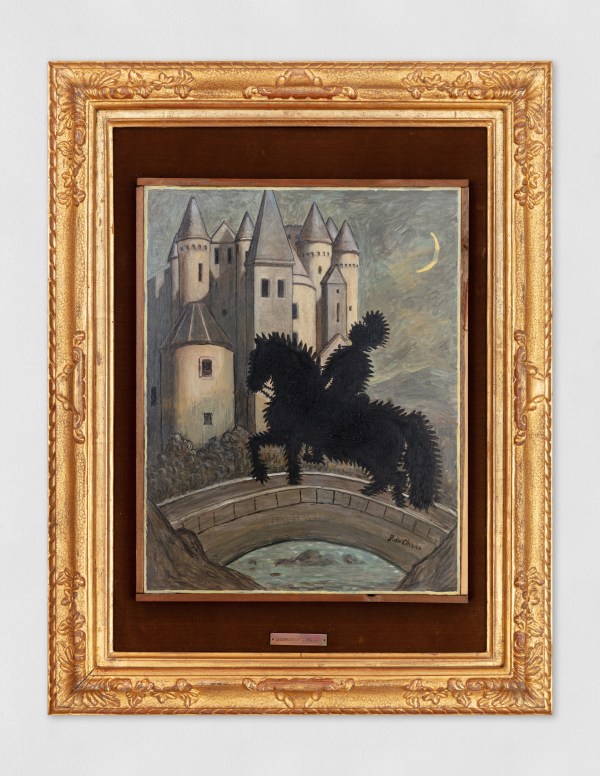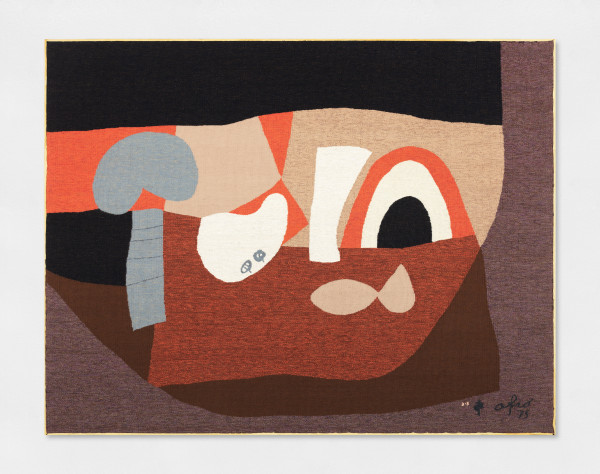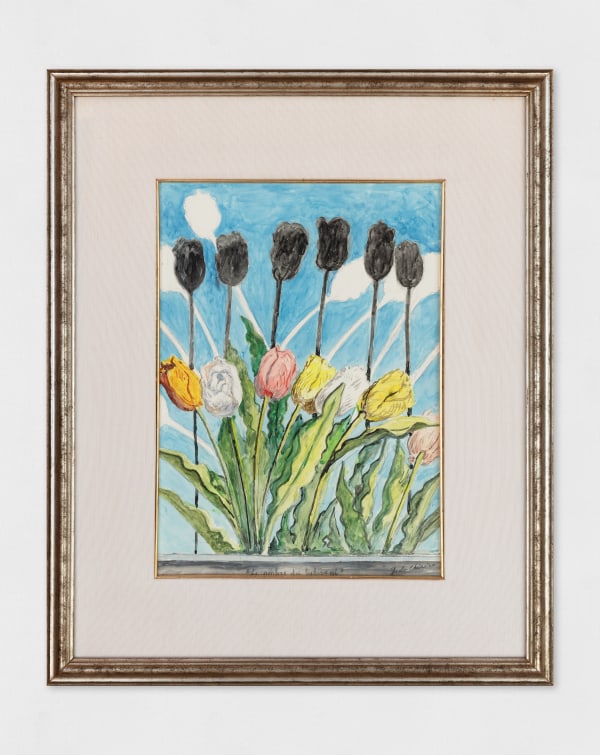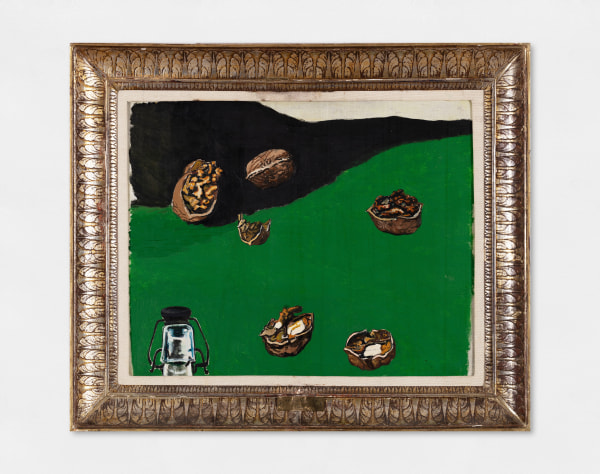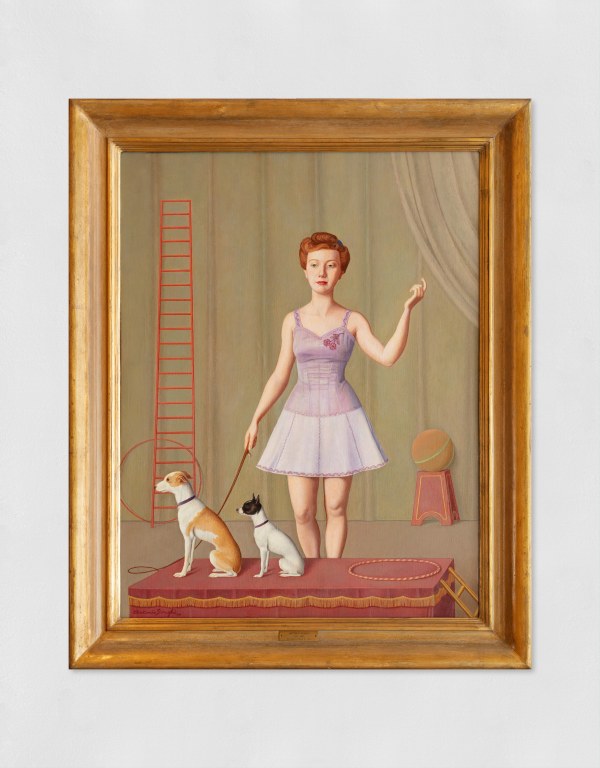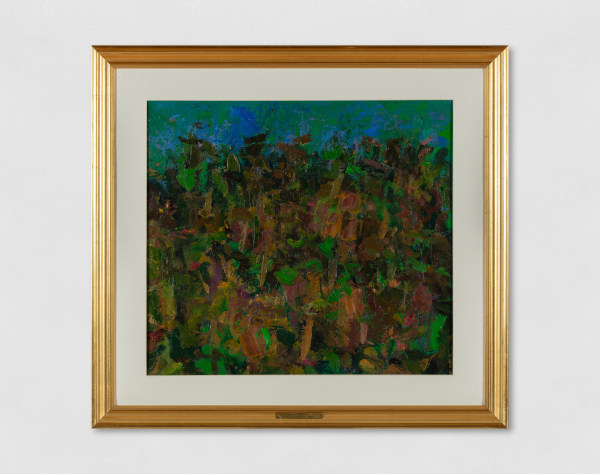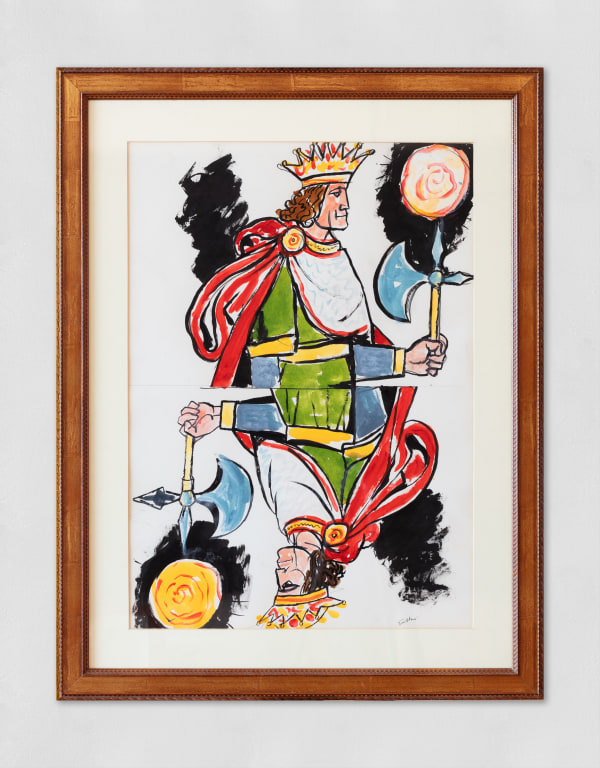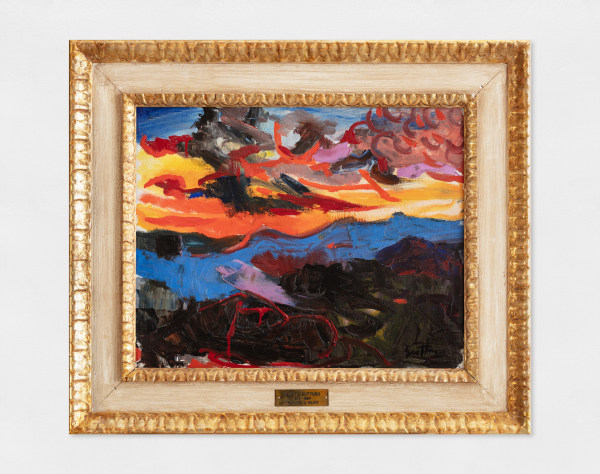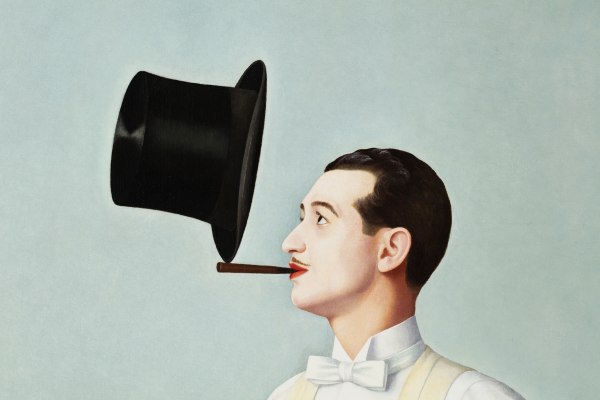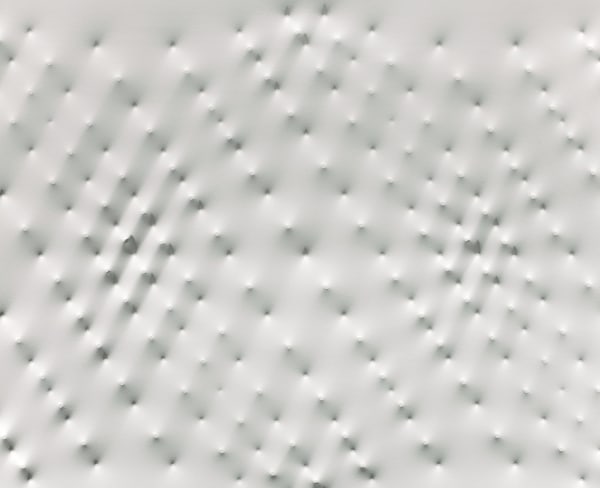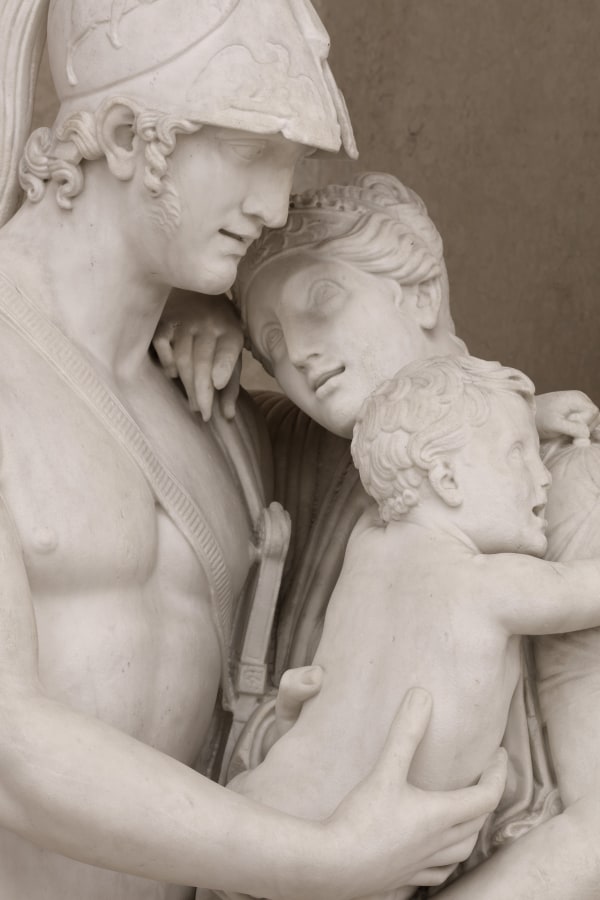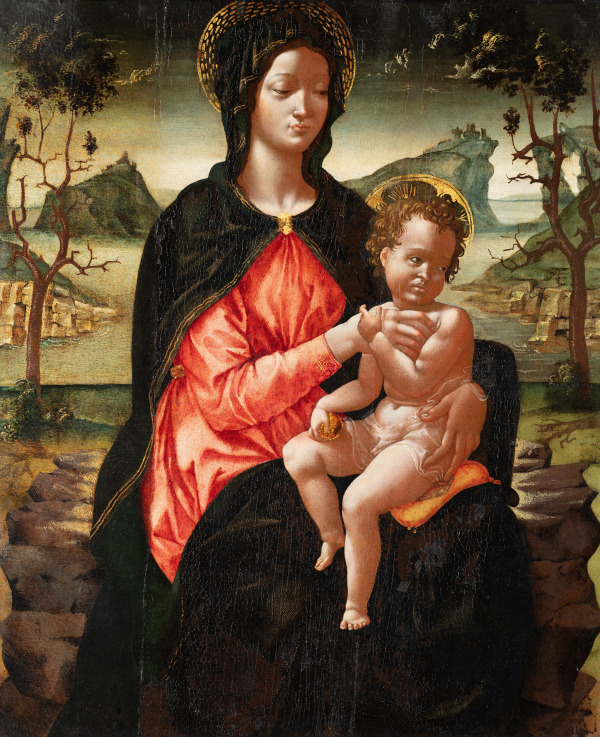-
Between the two world wars, the artistic landscape in Italy was multifaceted, with an extensive variety of voices and approaches: individual visions maneuvered between movements and trends, from eclecticism to a return to structure, from avant-garde to tradition, together with propaganda and more intimate perspectives.
The Novecento formed in 1922, a group of seven people in Milan including important artists and musicians alongside literary and political figures, gathering in the living room of art critic Margherita Sarfatti: Anselmo Bucci, Leonardo Dudreville, Achille Funi, Gian Emilio Malerba, Piero Marussig, Ubaldo Oppi and Mario Sironi. They shared an aspiration for "modern classicism." The group disbanded in 1924, but the movement soon widened to become the Novecento Italiano, a vaster and more diverse array of people with different goals and frames of reference.
Sironi best embodied this movement, learning from the major contemporary European painters while embracing a visual language rich in archaisms, to promote the idea that art also has public and educational purposes, summarised in the Manifesto of Mural Painting in 1933, written together with Campigli and Funi.
Novecento Italiano – first displayed in 1926 and then in 1929 – delineated a vast perimeter including very different trends, such as Morandi and Sironi who, in a certain way, represented opposite positions: from a more intimate perspective to rigorous propaganda; the group of the Italiens de Paris was also important (de Chirico, Savinio, de Pisis and Campigli and all the Italian artists gravitating towards Paris) as well as Carrà, in his most archaic phase. Sarfatti identified a common factor among them: the rejection of the avant-garde.The term, Magical Realism first appeared in a 1925 text by Franz Roh, describing the pictorial tendencies of German and Italian artists who shared a return to a cold and objective perspective, with excessive detail. This dimension, bordering between reality and dreams, was magical and timeless.
-
 Carlo CarràL'Aia, 1928Oil on canvas / Olio su tela / Öl auf Leinwand28 1/8 x 36 1/4 in
Carlo CarràL'Aia, 1928Oil on canvas / Olio su tela / Öl auf Leinwand28 1/8 x 36 1/4 in
71.5 x 92 cm -
 Antonio DonghiFiori, 1935Oil on canvas / Olio su tela / Öl auf Leinwand19 3/4 x 15 3/4 in
Antonio DonghiFiori, 1935Oil on canvas / Olio su tela / Öl auf Leinwand19 3/4 x 15 3/4 in
50 x 40 cm -
-
 Achille Virgilio Socrate Funi, Visione di una città ideale Figure in uno sfondo architettonico con scultura, 1951
Achille Virgilio Socrate Funi, Visione di una città ideale Figure in uno sfondo architettonico con scultura, 1951 -
 Giorgio Morandi, Paesaggio, c.1925
Giorgio Morandi, Paesaggio, c.1925 -
 Afro Basaldella, Composizione verde, 1963
Afro Basaldella, Composizione verde, 1963 -
 Achille Virgilio Socrate Funi, Gruppo di tre figure maschili abbigliate da mercanti, 1951
Achille Virgilio Socrate Funi, Gruppo di tre figure maschili abbigliate da mercanti, 1951 -
 Achille Virgilio Socrate Funi, Visione di una Città ideale. Edifici, colonnati, tempio in costruzione, statua centrale, personaggi sulla piazza e porto sullo sfondo, 1951
Achille Virgilio Socrate Funi, Visione di una Città ideale. Edifici, colonnati, tempio in costruzione, statua centrale, personaggi sulla piazza e porto sullo sfondo, 1951 -
 Giorgio de Chirico, Bosco silente, 1927
Giorgio de Chirico, Bosco silente, 1927 -
 Achille Virgilio Socrate Funi, Figura maschile abbigliata da mercante, 1951
Achille Virgilio Socrate Funi, Figura maschile abbigliata da mercante, 1951 -
 Max Ihlenfeld, known as Massimo Campigli, Casa / Maison / Composizione , 1959
Max Ihlenfeld, known as Massimo Campigli, Casa / Maison / Composizione , 1959 -
 Achille Virgilio Socrate Funi, Visione di una Città ideale. Figure su fondale architettonico di ispirazione classica, 1951
Achille Virgilio Socrate Funi, Visione di una Città ideale. Figure su fondale architettonico di ispirazione classica, 1951 -
 Giorgio Morandi, Paesaggio, 1925
Giorgio Morandi, Paesaggio, 1925 -
 Giorgio de Chirico, Cavallo con drappo giallo, c.1950
Giorgio de Chirico, Cavallo con drappo giallo, c.1950 -
 Giorgio de Chirico, Corazze e cocomeri, 1924
Giorgio de Chirico, Corazze e cocomeri, 1924 -
 Felice Casorati, Donna con manto o Ragazza seduta con coperta, 1935
Felice Casorati, Donna con manto o Ragazza seduta con coperta, 1935 -
 Achille Virgilio Socrate Funi, Visione di una città ideale. Porto con tempietto, palazzo, colonnati e figure., 1951
Achille Virgilio Socrate Funi, Visione di una città ideale. Porto con tempietto, palazzo, colonnati e figure., 1951 -
 Achille Virgilio Socrate Funi, Statua classica con panneggio, 1951
Achille Virgilio Socrate Funi, Statua classica con panneggio, 1951 -
 Carlo Carrà, L'Aia, 1928
Carlo Carrà, L'Aia, 1928 -
 Giorgio de Chirico, Ritorno al castello avito, 1970
Giorgio de Chirico, Ritorno al castello avito, 1970 -
 Giorgio de Chirico, Vaso di crisantemi, 1912
Giorgio de Chirico, Vaso di crisantemi, 1912 -
 Afro Basaldella, Ponte dei Pugni, 1975
Afro Basaldella, Ponte dei Pugni, 1975 -
 Giorgio de Chirico, L’ombra dei tulipani , 1971
Giorgio de Chirico, L’ombra dei tulipani , 1971 -
 Antonio Donghi, Fiori, 1935
Antonio Donghi, Fiori, 1935 -
 Felice Casorati, Fiori, 1948
Felice Casorati, Fiori, 1948 -
 Antonio Donghi, Donna Che Fuma, 1950
Antonio Donghi, Donna Che Fuma, 1950 -
 Felice Casorati, Paesaggio La Casa, 1920
Felice Casorati, Paesaggio La Casa, 1920 -
 Felice Casorati, Le sorelle Pontorno, 1937
Felice Casorati, Le sorelle Pontorno, 1937 -
 Renato Guttuso, Noci e bottiglia, 1966
Renato Guttuso, Noci e bottiglia, 1966 -
 Antonio Donghi, L'ammaestratrice di cani, 1946
Antonio Donghi, L'ammaestratrice di cani, 1946 -
 Antonio Donghi, Paesaggio (Veduta di Città di Castello), 1946
Antonio Donghi, Paesaggio (Veduta di Città di Castello), 1946 -
 Renato Guttuso, Fumatore (Fumatore giallo), 1958
Renato Guttuso, Fumatore (Fumatore giallo), 1958 -
 Antonio Donghi, Ritratto di donna, 1944
Antonio Donghi, Ritratto di donna, 1944 -
 Renato Guttuso, Paesaggio romano (Villa Medici), 1946
Renato Guttuso, Paesaggio romano (Villa Medici), 1946 -
 Renato Guttuso, Stufa a legna, 1948
Renato Guttuso, Stufa a legna, 1948 -
 Ennio Morlotti, Paesaggio, 1955
Ennio Morlotti, Paesaggio, 1955 -
 Renato Guttuso, Re di danari, c.1980
Renato Guttuso, Re di danari, c.1980 -
 Renato Guttuso, Tramonto a Velate, 1960
Renato Guttuso, Tramonto a Velate, 1960
-
Join our mailing list
* denotes required fields
In order to respond to your enquiry, we will process the personal data you have supplied in accordance with our privacy policy.

